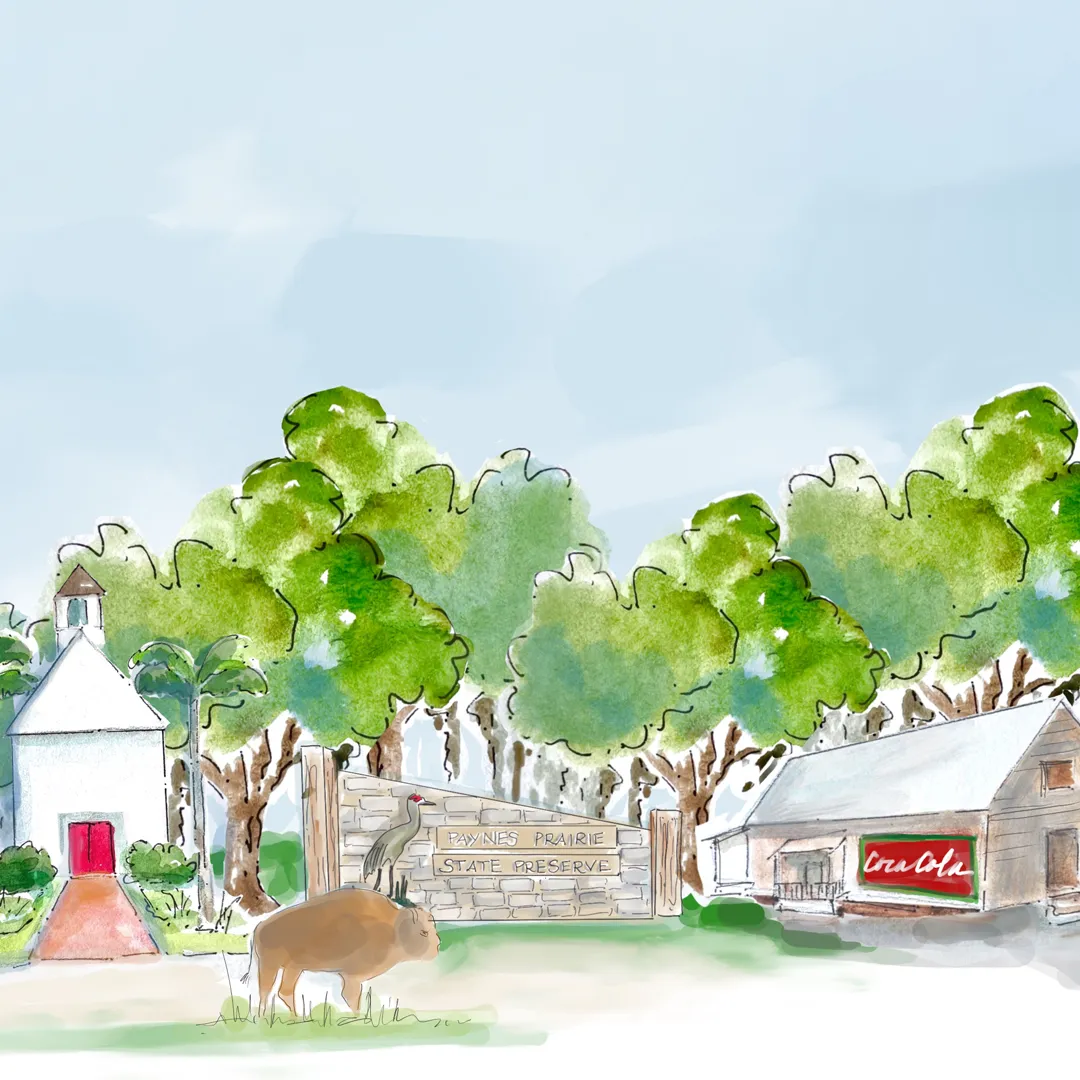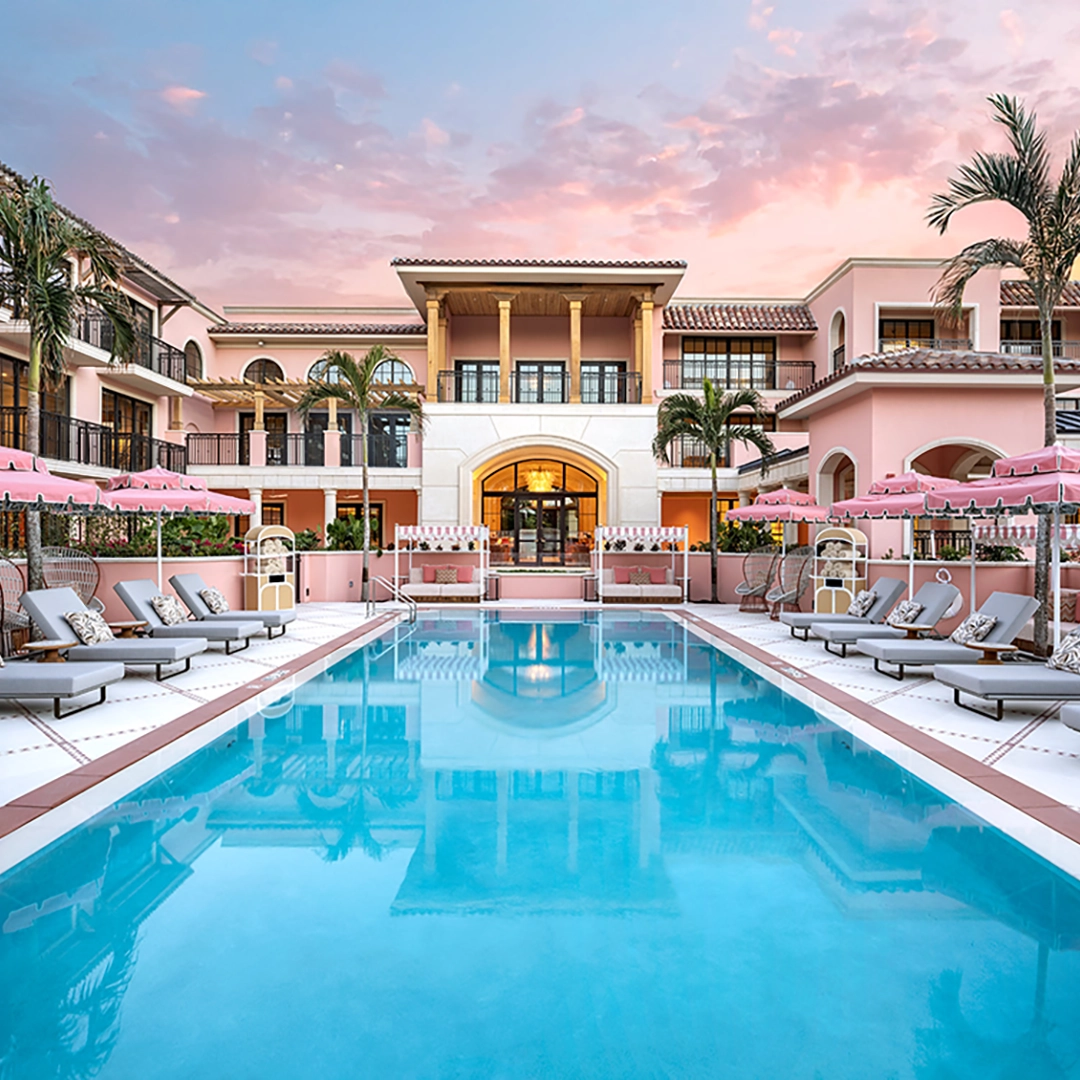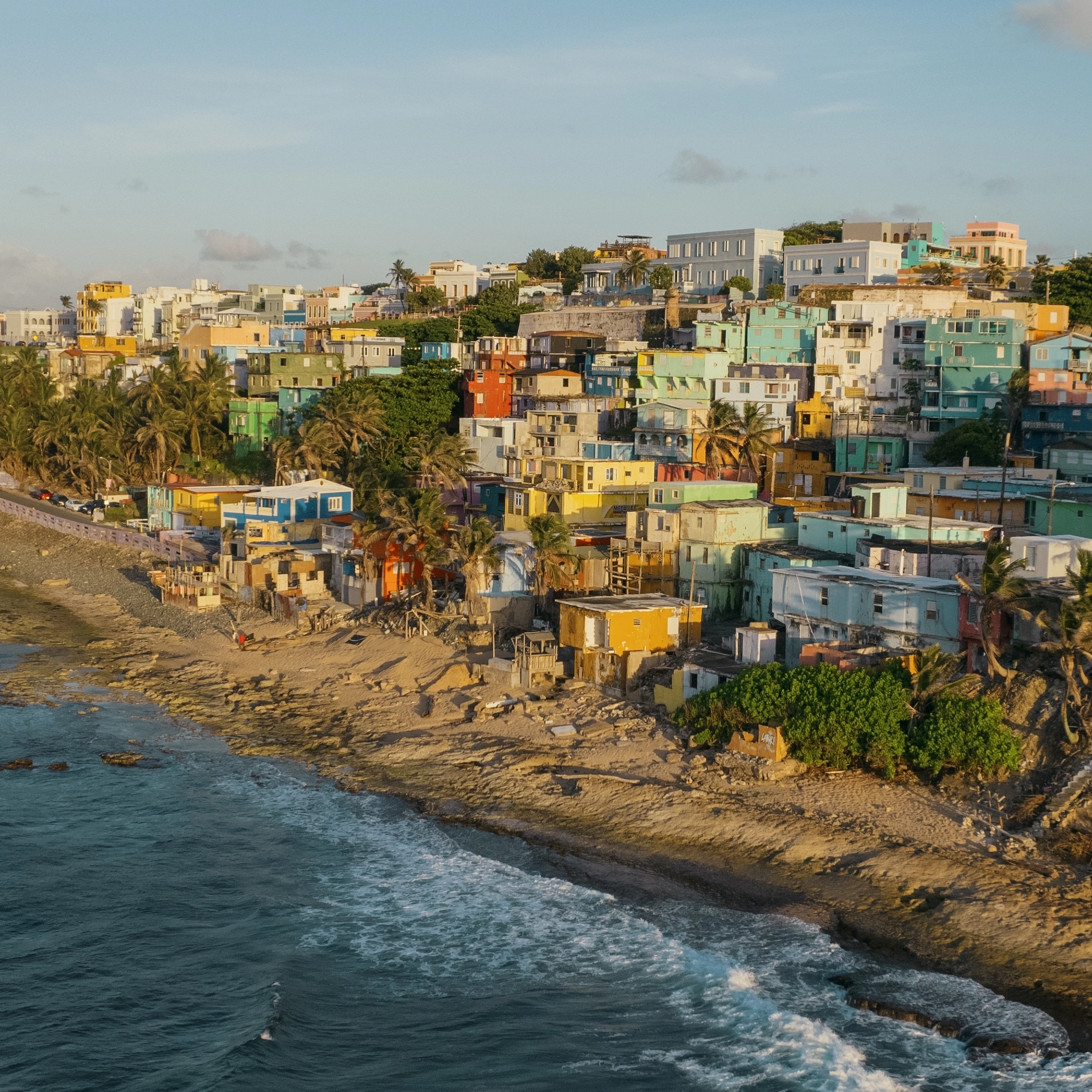by | June 16, 2025
Our Editor Takes a Trip to Palmetto Bluff: South Carolina’s Jewel on the River
At Palmetto Bluff, a South Carolina wildlife sanctuary and luxury resort, every day holds the possibility of a once-in-a-lifetime moment.
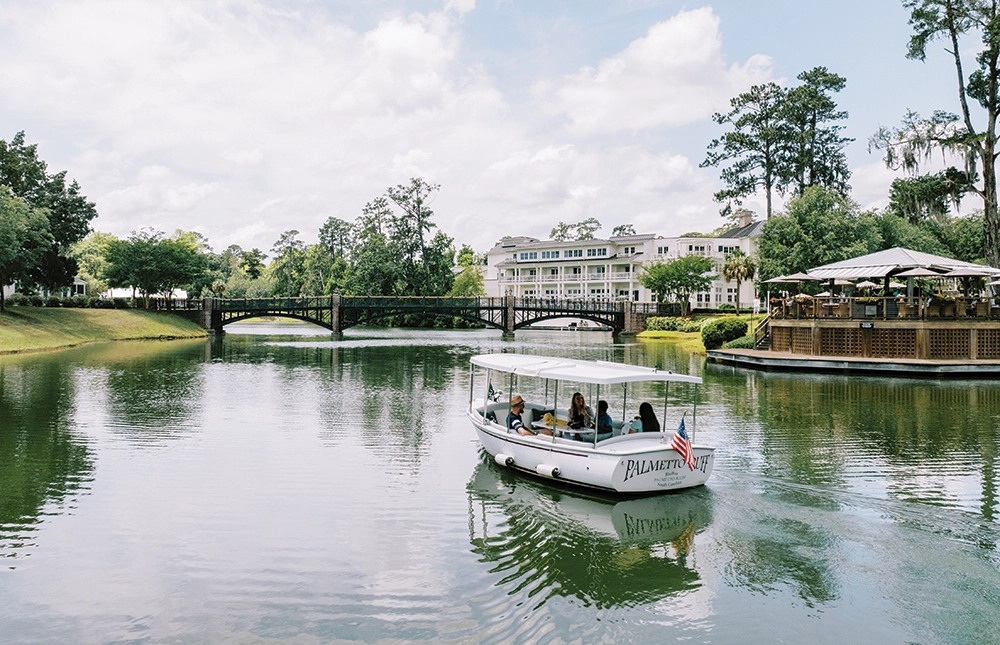
It was a scene straight out of a nature documentary: a bald eagle came screaming out of the sky, talons extended, right toward the boat carrying about a dozen sightseers. For a second, it seemed like the bird might slam into the windshield. But at the last moment, it shot up into the sky, locking onto an osprey holding a fresh fish. The osprey dropped its catch into the saltwater below in a panic, and the two birds of prey twisted and clawed at each other midair before finally peeling off in opposite directions.
“I literally thought the eagle was coming through the glass,” said naturalist Cassie Critchlow, still breathless from the memory.
“We were supposed to be on that tour!” I said, disappointed at missing the big show.
“Well, it will probably never ever happen again,” she laughed. Despite the rareness of the encounter, it was just another day at Palmetto Bluff—a place where the extraordinary is always fluttering just above the surface.
No Ordinary Bluff
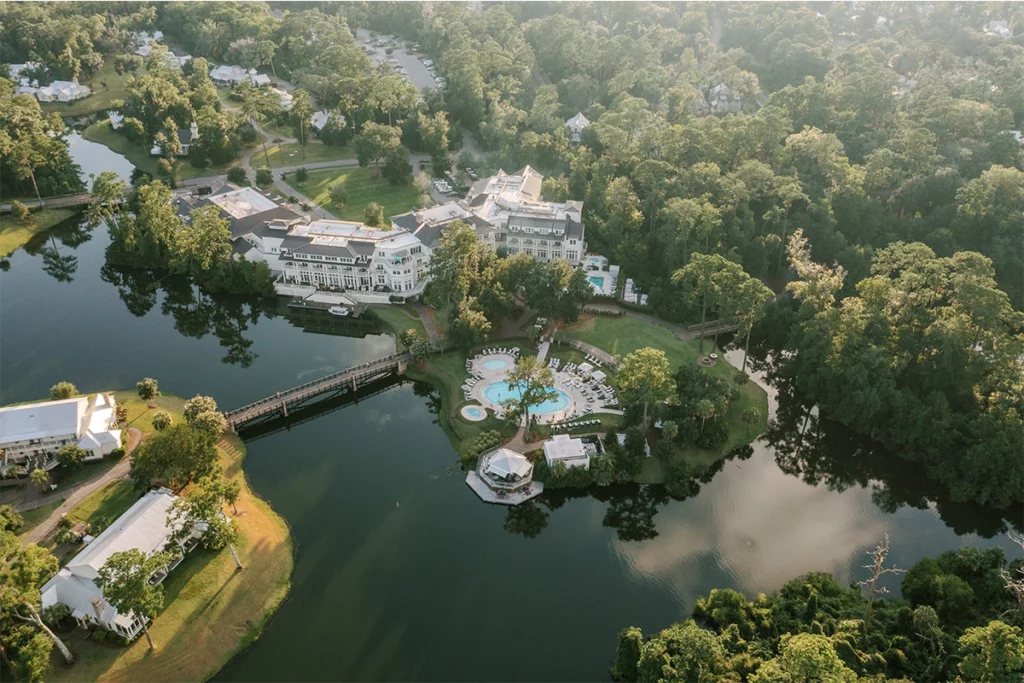
Palmetto Bluff is a 20,000-acre nature preserve teeming with wildlife and anchored by a luxury Montage resort plus two upscale residential villages dotted with custom homes—available for rent or sale—in the heart of South Carolina’s Lowcountry. My husband, Brian, and I visited Palmetto Bluff once before, nearly 20 years ago, with friends who live on nearby Hilton Head Island, S.C. We came by way of our friends’ 20-foot center console boat, buzzing down the May River and disembarking on the dock for an evening of dark ’n stormy cocktails and shrimp and grits at the River House, which at the time served as the resort’s original inn. Back then, the destination was in its infancy, with only the River House and a cluster of small cottages for accommodations. Today, visitors and residents still arrive by boat (although this time we drove in on the private 4-mile tree-lined road), and while Palmetto Bluff maintains its laid-back charm, the vessels tied up at the dock are a lot bigger these days. The Lowcountry-luxe vibe has only leveled up, alongside the resort’s growing reputation as a coveted vacation escape and celebrity-wedding backdrop.
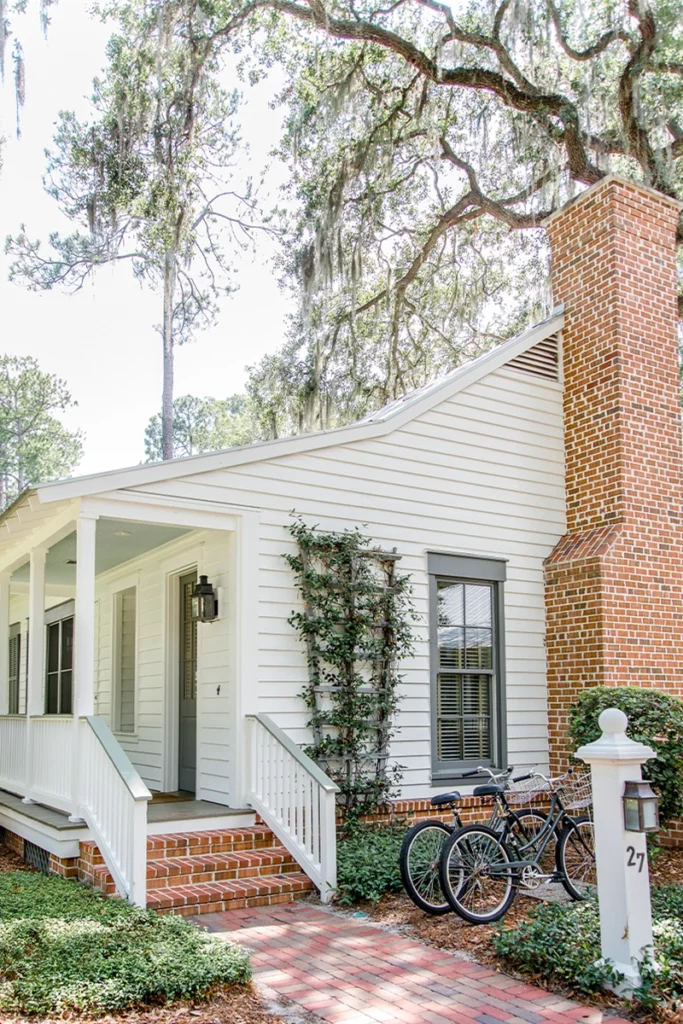
This time around, we came for a quick getaway from our daily routine in Jacksonville, just three hours away, as well as a low-key celebration of Brian’s birthday. We stayed in cottage 17, a white clapboard bungalow framed by a stately camellia and a screened-in porch overlooking a quiet pond. When we arrived, Brian—ever the creature of habit—headed straight for the gym, while I took one of the soft blue bikes parked in front of our cottage to check out the place. I followed the winding brick path through the cottage community over a small bridge leading to the River House restaurant and into Wilson Village. There, I pedaled past rows of modern-farmhouse-style residences and down a quiet main street, which was dotted with independent boutiques and restaurants and bookended by a full-service boathouse and a village green. During our three-day stay, I watched a huge wedding tent go up on the green, evolving from a rudimentary structure to a botanical jewel draped in navy fabric and adorned with live trees and crystal chandeliers. As I circled this tent on my bike, I couldn’t help but wonder who would be dancing inside this gorgeous display on Saturday night, and I dreamed of our own daughters getting married in such style one day.
Here’s what to do at Palmetto Bluff
Wild by Design

Palmetto Bluff’s history is punctuated by a string of fanciful dreams, reinventions and never-going-to-happen-again moments. For thousands of years, Native Americans recognized its beauty, fishing in the waters off the coast and hunting and gathering in the forests. Then in the 1800s, plantation farming took root, followed by turmoil and turnover during the Civil War. Freedmen later returned to live and tend the land where they had once suffered as slaves. In the 1900s, New York banker Richard T. Wilson Jr., who gave Palmetto Bluff its name, consolidated and expanded the acreage. After a fire destroyed his grand mansion—ruins of which lie in the village square today—Wilson sold the property to a paper company, which surprisingly ushered in an era of preservation and used the land as a hunting camp to entertain clients. The modern iteration of Palmetto Bluff was established in 2001, shortly before my first voyage here. Today it is part of the South Street Partners portfolio of luxury resorts and residential communities.
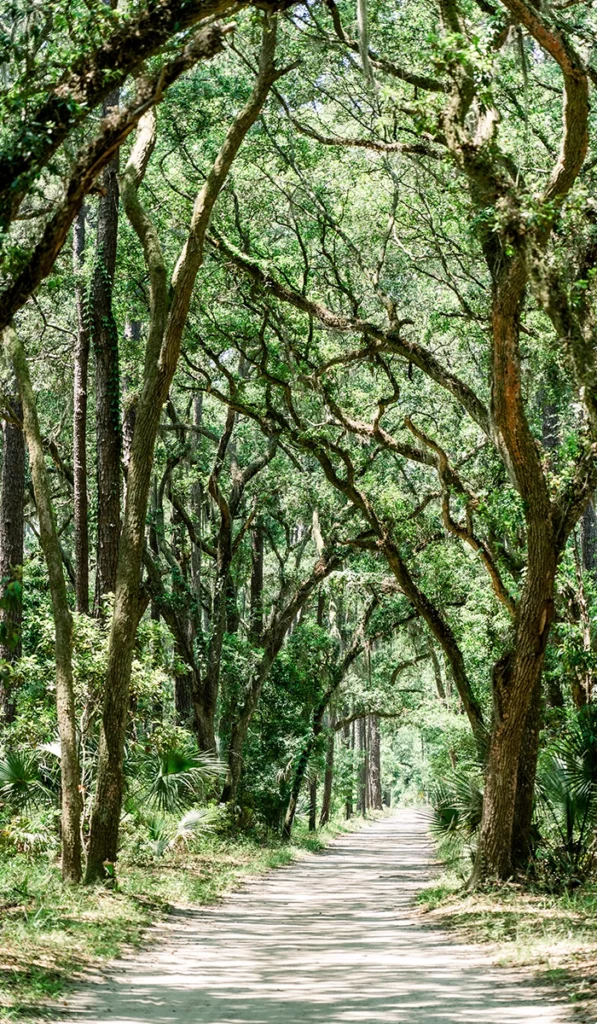
Even though the property has transformed and transferred hands many times over several centuries, conservation has remained a constant drumbeat in Palmetto Bluff lore that lives on through voices like Critchlow’s. On our nature walk—one of dozens of daily planned activities guests can book at the resort—Critchlow detailed Palmetto Bluff’s natural history. While walking backward for the full hour, she spoke of 200-year-old oak trees and how the resurrection fern growing on their limbs blooms when it rains, how a single Eastern oyster in the May River can filter 25 gallons of water a day, how the unsuspecting cockroach is a pollinator of magnolia trees and how Indigenous people used wax myrtle as a natural insect repellent. At the tour’s end, we stood rolling wax myrtle leaves in our hands and sniffing the minty scent at the back door to Montage’s grand inn.
Shotguns and Showdowns
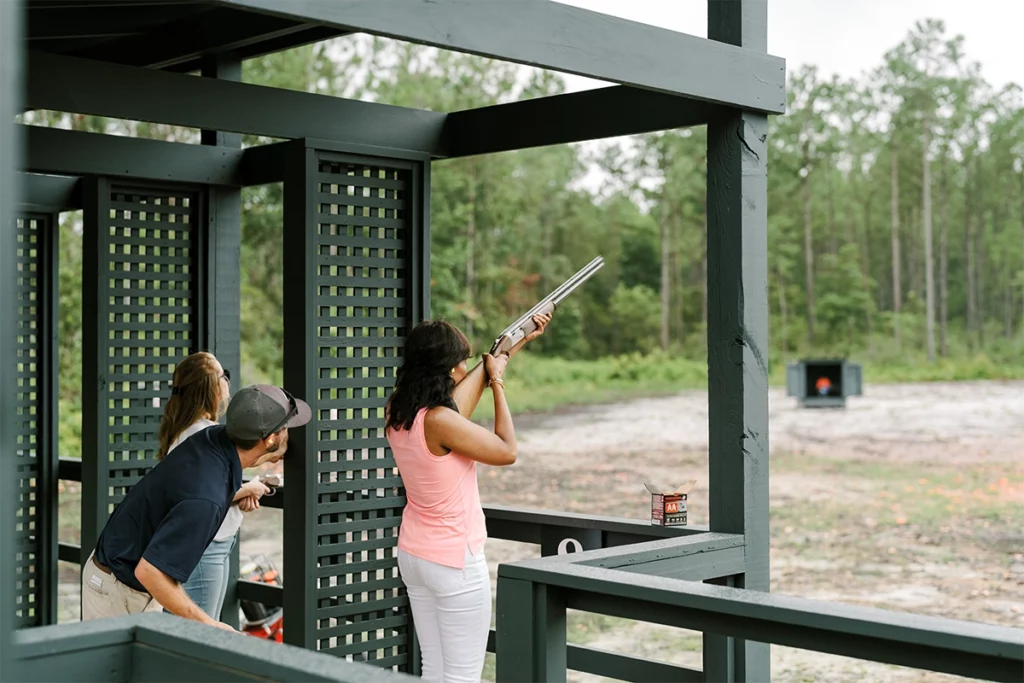
Brian and I had missed the dramatic fight between the eagle and the osprey because we had opted instead to shoot some birds at the Palmetto Bluff Shooting Club—not real ones, of course, but the sporting clays kind. This game of golf-like marksmanship involved 12 stations and 100 rounds. Orange saucers flew from every angle imaginable, some even bouncing off trampolines, with instructor Bill Lamb sharing his pro tips.
“Jamie, keep a hard focus at 6 o’clock,” Lamb said, explaining that once the sporting clay flies into the air, I should think of it like a clock and keep a hard visual focus on a tiny spot at the center bottom.
“This time, your focus should be on 1 o’clock on the first bird, then six on the second!” he said.
Two targets flew out. Two misses.
I was bummed, but Brian was killing it. Besides, it was his birthday, so I wanted him to have fun.
It’s one of thinly places you can still see fireflies in the Lowcountry.
—Andrew Baldino
By station 11, I finally shot my two birds in one round—a once-in-a-lifetime achievement, to be sure.
Beyond the Shooting Club, there’s plenty more action, or none at all depending on your mood. There’s a racquet club with tennis and pickleball, a golf course, horse stables, multiple swimming pools, fitness centers, boutique shopping, chapels and even two whimsical treehouses. A world-class spa, a secret speakeasy, culinary classes and rotating art exhibits round out the experience.
For the explorer, there’s boating, kayaking, hiking, and even a Cadillac to borrow for daytrips to Bluffton, Hilton Head or Savannah, Ga. Or you can simply settle into a rocking chair with a spiked peach lemonade tea and let the art of porchin’ work its Southern magic. So many creature comforts abound that it’s impossible to list them—or do them all in one weekend. But if you can think of it, Palmetto Bluff has it covered.
Finding Fireflies
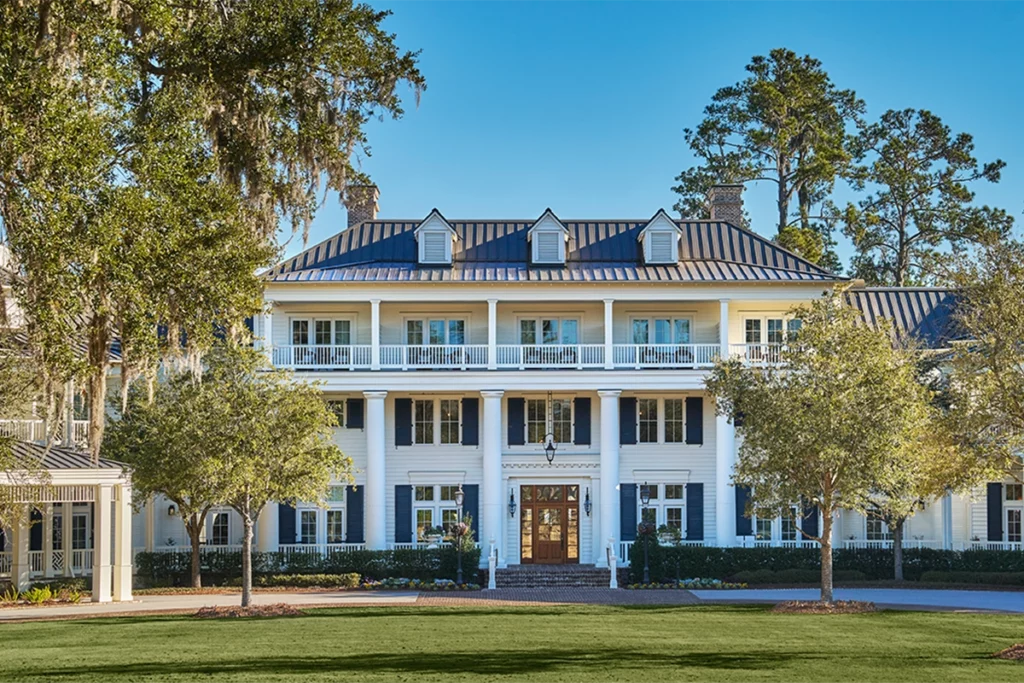
More than a resort, the Bluff is a sprawling community. On our trip, I also connected with Palmetto Bluff marketing coordinator Andrew Baldino. He showed me around the Montage hotel, with a stop by a floor-to-ceiling map that put the property’s size into perspective. Pointing to different clusters on the illustration, Baldino explained plans for development of two more villages—while ensuring that thousands of acres would remain permanently protected preserve. Afterward, we hopped into a golf cart for a drive, quickly passing by the chapel where the Biebers said “I do” back in 2019 and talking more about the Bluff’s conservation ethos.
Along the route, Baldino pointed to an intricate treehouse surrounding the trunk of a giant live oak. “It’s built around the tree, not into it,” he said. “We don’t want to harm the tree.”
As the sun set on our evening drive, we parked for a few moments in front of the May River Golf Club, chatting not about the technical aspects of the Jack Nicklaus-designed course, but about how the grounds are maintained using no harmful chemicals and only natural pest control methods.
“It’s one of the only places you can still see fireflies in the Lowcountry,” he said.
“I can’t remember the last time I saw a firefly—probably as a kid growing up in North Carolina,” I said.
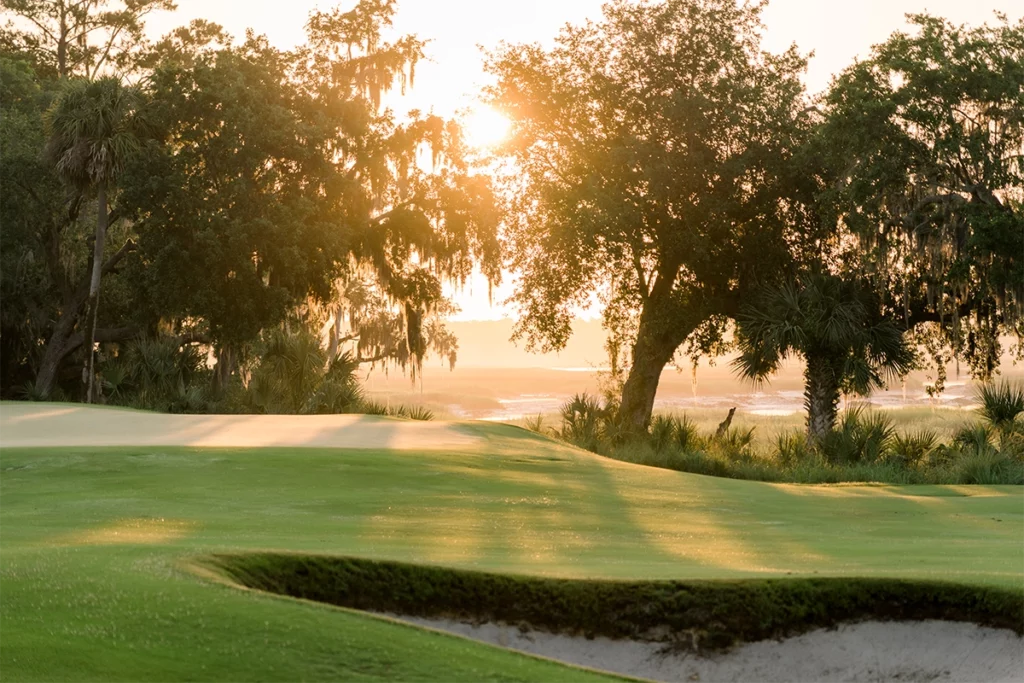
With that, Baldino scooted toward the River House to drop me for dinner, the last of our quick trip. As we drove away from the golf club, the lyrics to a favorite JJ Grey & Mofro song floated into my head: “Where did all the fireflies go?/I heard someone say/They ain’t never coming back.”
It was still March—too early to test Baldino’s claim. But if seeing is believing, then spotting those tiny blinks on a warm summer night is reason enough to come back.
For more travel guides and destinations, click here.
About the Author
As an editor and journalist, Jamie has covered travel and culture around the world. Her work has appeared in national and international publications. She spent much of her professional life abroad and worked in newsrooms from The Moscow Times to The Times of London. She holds degrees from Florida State and Georgetown. She founded Flamingo in 2015.

